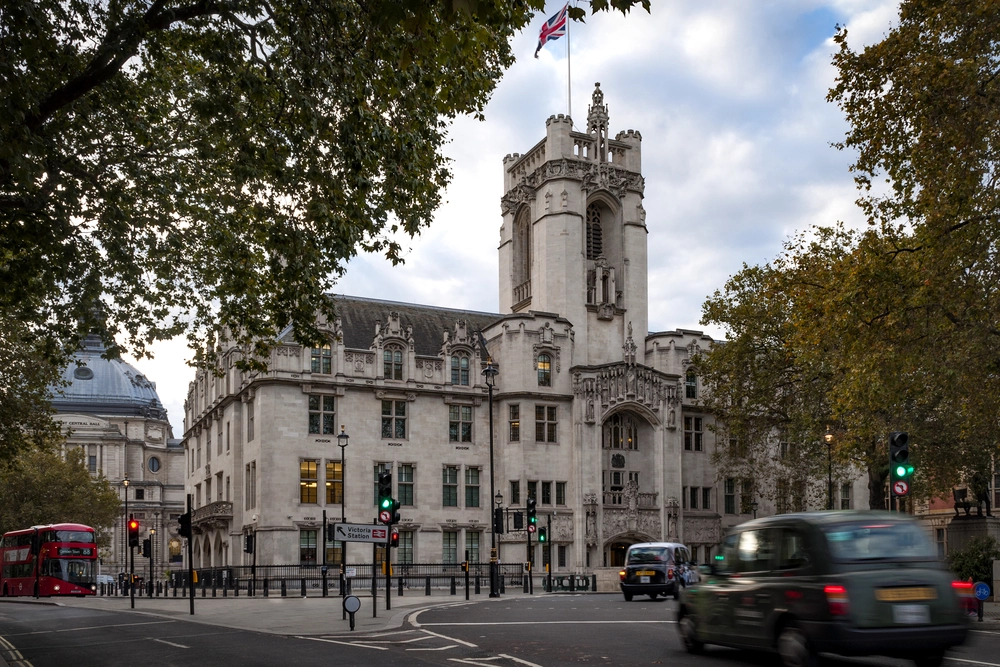
Supreme Court rules: Part-year workers are entitled to 5.6 weeks annual leave


The long-awaited Supreme Court judgment in Harpur Trust v Brazel [2022] UKSC 21 was handed down in July 2022. It clarified that holiday for part-year workers that are employed for a whole year but only work some weeks of the year should not be subject to a pro rata reduction. In other words, those who work 39 weeks of the year (i.e. term time) have the same holiday entitlement (i.e. 5.6 weeks) as those who work all year.
The Working Time Regulations 1998 specifically enable pro rata reductions to take account of part time hours (because a worker who works 3 days a week still gets 5.6 weeks but is paid for less days than a full-time worker would be over those 5.6 weeks). The Working Time Regulations 1998 do not, however, make any provision in respect of workers who are engaged for a full year but only work some weeks of that year (in other words part-year workers – including those who work 'term time only' roles).
Relevant facts
Brazel was employed under a permanent contract on a 'zero hours' basis by the Harper Trust to work as a music teacher 'as and when needed', with there being no obligation on the Harpur Trust to offer minimum hours of work and with pay linked to hours actually worked. Brazel ended up working mainly during school term time and on very part time hours.
Brazel's contract (and the Working Time Regulations 1998) entitled her to 5.6 weeks paid holiday per year. Harpur Trust required her to take this during the school holidays and the contract agreed that this would be paid by way of three equal payments in respect of holiday at the end of each school term.
Harpur Trust altered their method of calculating this holiday pay at the end of each term in order to follow ACAS guidance produced the time which recommended using the 12.07% method to calculate holiday entitlement and pay by reference to the hours worked in the preceding term.
Brazel then pursued an employment tribunal claim for unlawful deductions asserting that the 12.07% method was inconsistent with the Working Time Regulations 1998 and that Harpur Trust should have been allocating her 5.6 weeks holiday per year calculated in accordance with section 224 of the Employment Rights Act 1996 (week's pay calculations for those with no normal working hours) meaning that her holiday pay should have been determined using the averaging method (ignoring any weeks in which no earnings were received) and applied for 5.6 weeks of the year. She was essentially arguing that the 12.07% was not in line with legislation for holiday entitlement and pay and resulted in her receiving 5.43% less than if the Harpur Trust has calculated holiday in line with UK legislation.
The Tribunal dismissed her claims, but Brazel was successful in the Employment Appeal Tribunal and the Court of Appeal, who both determined that there was no requirement in the Working Time Regulations 1998 to pro rate the 5.6 weeks of holiday entitlement for part-year workers and that capping the entitlement via the 12.07% method was therefore not appropriate. The Working Time Regulations required a week's pay to calculated in accordance with the "week's pay" rules contained in sections 221 to 224 of the Employment Rights Act 1996 meaning that where, like Brazel, a worker does not have normal working hours, a week's pay is taken to be the worker's average weekly pay in a reference period of 52 weeks before the first day of the relevant period of leave ignoring any weeks in which no remuneration was payable. The Court of Appeal acknowledged this would result in part-year workers receiving a high proportion of their earnings as holiday pay when compared to full-year workers but saw no issue with this.
Supreme Court decision
The Supreme Court agreed that the UK legislation does not require part-year workers to have their annual leave capped at 12.07% of annualised hours. The calculation for a weeks' pay in order to calculate holiday pay entitlement involves looking at average earnings over the previous 52 weeks (it was 12 weeks when Brazel brought her claim) which in Brazel's case (and because for that calculation you have to ignore any weeks when the individual received no pay at all) meant that her holiday pay should have been the 17.5% she had claimed (and not the 12.07% paid by Harpur Trust).
The Supreme Court found that a slight favouring of workers with a highly uncommon work pattern is not so absurd as to justify the wholesale revision of the statutory scheme set out in the Working Time Regulations (which would therefore be for Government to amend is this was not the result intended).
What does this mean for employers?
In essence then, the Supreme Court found that whilst the application of the current statutory rules resulted in a somewhat irrational outcome here, the fact that such outcome would apply to a fairly small pool of affected individuals within the UK generally meant that it didn’t warrant amending or throwing out the rules altogether.
It is important to remember that this decision does not impact on holiday pay for part-time workers who work a set pattern of hours every week for a full year. They are already entitled to 5.6 weeks holiday paid at the rate of their normal week's pay (which does in effect mean a pro rating of holiday pay because a normal week's pay for them is already less than a full time worker proportionate to the amount of hours that they work).
This decision will predominantly impact employees who have atypical working patterns, do not work a full leave year, and are engaged on permanent contracts (which may be umbrella contracts, meaning they are engaged under a series of individual contracts, but their employment is preserved by an overarching contract, which may be express or implied). It may therefore also affect casual/zero hours workers who are engaged under permanent contracts, because the 12.07% method (which has always generally been used to try and translate impossible entitlement calculations under the legislation into something logical and workable) have been rejected by the Supreme Court.
How to calculate holiday entitlement for casual/zero hours workers is not set out in the Working Time Regulations though, with the Government blandly suggesting that employers calculate holiday entitlement by calculating the average days or hours worked each week based on a representative reference period.
If you have workers that are either part-year workers or casual yet engaged on permanent contracts, you may be at risk of claims for underpaid holiday pay if you have been using the 12.07% method (although the statutory 2 year back limit would apply). Going forwards therefore, you should urgently consider options on contractual working and engagement to seek to avoid/limit this impact. This might very well involve looking at whether these workers need to be engaged on permanent contracts or whether fixed term contracts and/or contracts designed to try and avoid the implication of an umbrella contract between assignments (with holiday pay calculated and paid at the end of each assignment) might be more appropriate.
In Ms Brazel's case for example (and with the benefit of hindsight), the best approach based on the Judgment at hand (although it would likely have been much more administratively burdensome and provided a general lack of certainty for both sides) might perhaps have been to engage her on a fixed term contract purely for the term in question, pay in lieu of any accrued but untaken holiday at the end of that contract and then subsequently offer her a new fixed term contract to take effect at the start of the next term.
In reality however, no two sets of circumstances are likely to be completely identical, and what the safest and most appropriate option will be in any given case will depend quite heavily on the specific arrangement in question. If in doubt therefore, it is an area where it would be very sensible to take some professional advice to seek to minimise the chance of problems arising.
Without government reform on holiday legislation, and given the increasing rise in atypical working practices, this decision regrettably seems likely to give rise to significant further litigation and a great deal of enterprise by employers who are seeking to avoid, or limit being forced to provide part-year workers with a better holiday pay deal than those who work all year. There is increasing weight therefore towards the argument that it is time for a wholesale review and update of the Working Time Regulations to ensure that they remain fit for purpose in the ever-evolving employment landscape within the UK.































